
Narrative Realms
Immersive Interaction Design Project | 14 Weeks
HoloLens 2 | Unity | C# | MRTK | Visual Studio | Maya
Narrative Realms is an Augmented Reality Story Engine for collaborative writers to catalyse ‘Creative Bounce’; a synchronous flow state.
Immersing writers in a story of their own creation as they write within a tactile and collaborative storytelling platform, and augmenting the creative writing experience.


POV footage from a collaborative writing session, captured on the HoloLens 2.
THE PROBLEM
Writer’s Block
Creative writing is a fundamental conduit to communicate the human condition, and to preserve and promote the richness of human culture. Helping improve creative storytelling through technology is a central objective for many writers, especially in light of looming threats from Large Language Models (LLMs) that create a growing anxiety throughout the global creative writing industry that Artificial Intelligence may rapidly devalue human creativity and automate creative writing jobs.
THE OPPORTUNITY
Creative Bounce
One opportunity for writers to overcome creative block and yield compelling stories is through enhancing Creative Bounce - a combination of interpersonal synchrony and creative flow experienced while collaborating. However, current digital collaborative story authoring applications offer little consideration for existing creative writing methods. Narrative Realms explores the potential of Augmented Reality to provide creative writers with a novel approach for catalysing Creative Bounce during collaboration, building upon established writing techniques and structures.
“If you’ve got a good creative bounce going with somebody,
it accelerates the creative process.”
ETHNOGRAPHIC RESEARCH
Writers, Storytellers, Composers, Playwrights…

Map of interviewees and the media they write for.

Flow, as introduced by psychologist Mihaly Csikszentmihalyi. Described as a mental state of complete absorption in an activity, where a person becomes so engaged in the task at hand that they lose their sense of time and self.
INTERVIEWS
Trust The Process
Interviewees from a variety of collaborative writing backgrounds shared their writing process, and all stated that they frequently struggle with creative block. Furthermore, all participants elaborated on the rituals and methods they use to attempt to overcome creative block and attain a flow state. Casual conversations, walks, and other physical activities enabled a more creative mental state. However, many expressed how difficult it can often be to attain flow.
SYNTHESIS
Finding Connections
Insights wheel from seventeen interviews with writers from various industries.
METHODOLOGY
Points Of Intervention
Behaviour Settings refers to the relationship between an environment and the patterns of behaviour that occur within it. Behaviour Settings canvases were used to identify the tangible elements of a collaborative storytelling environment and the behaviour patterns within them, comparing a collaborative role-playing tabletop game setting with a collaborative television writers’ room. The behaviour settings canvasses yielded clear commonalities between two disparate collaborative writing settings, particularly regarding the roles of the participants, and the props used to facilitate the session.
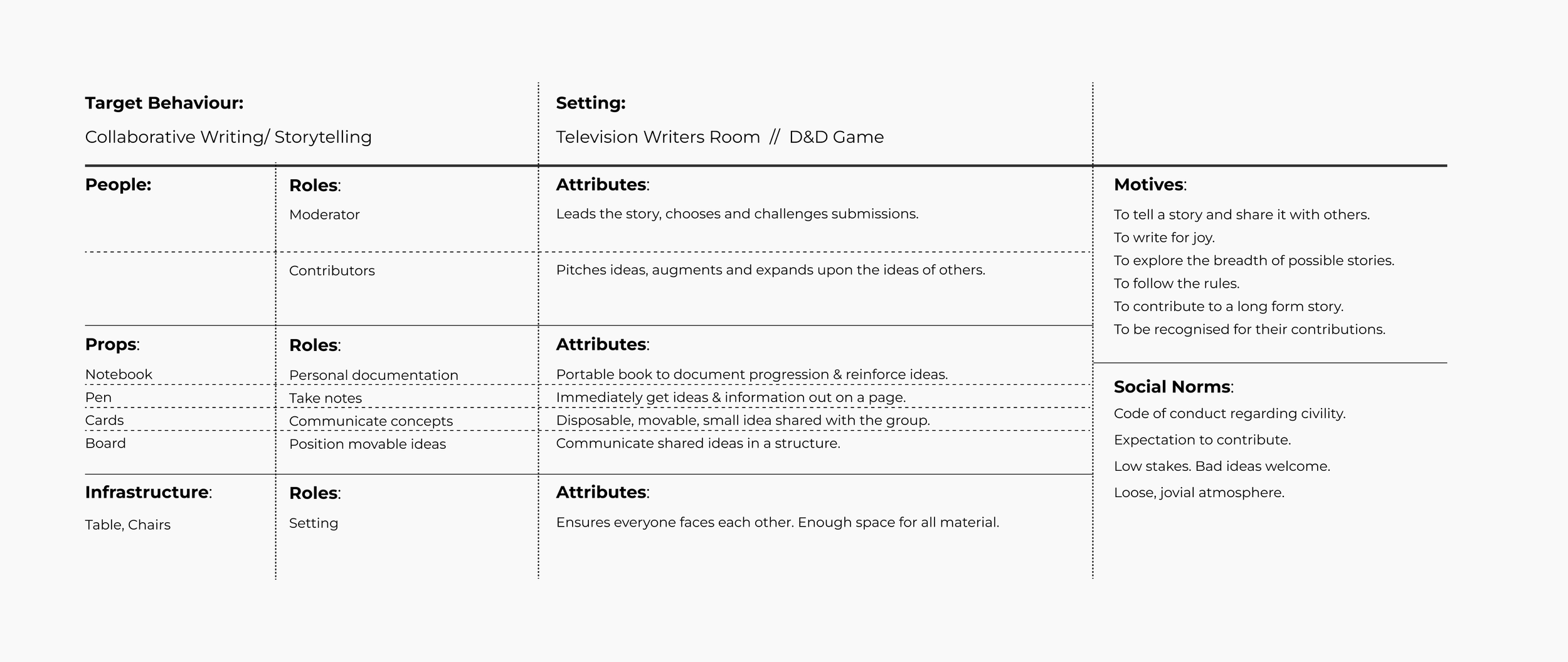
Behaviour Settings canvas; Commonalities in behaviour between a television writers’ room and a Dungeons & Dragons game.
KEY DRIVERS
Augmented Futures
Technological innovations such as augmented reality have equipped us with new tools to design immersive experiences to foster Creative Bounce. AR affords us the freedom to use our hands in a natural manner to interact with digital artefacts, and aids immersion within stories.

RESEARCH REPORT
In Greater Detail
A research report was written detailing and assessing the market need, research methodologies, and prototype development process. This is available upon request.

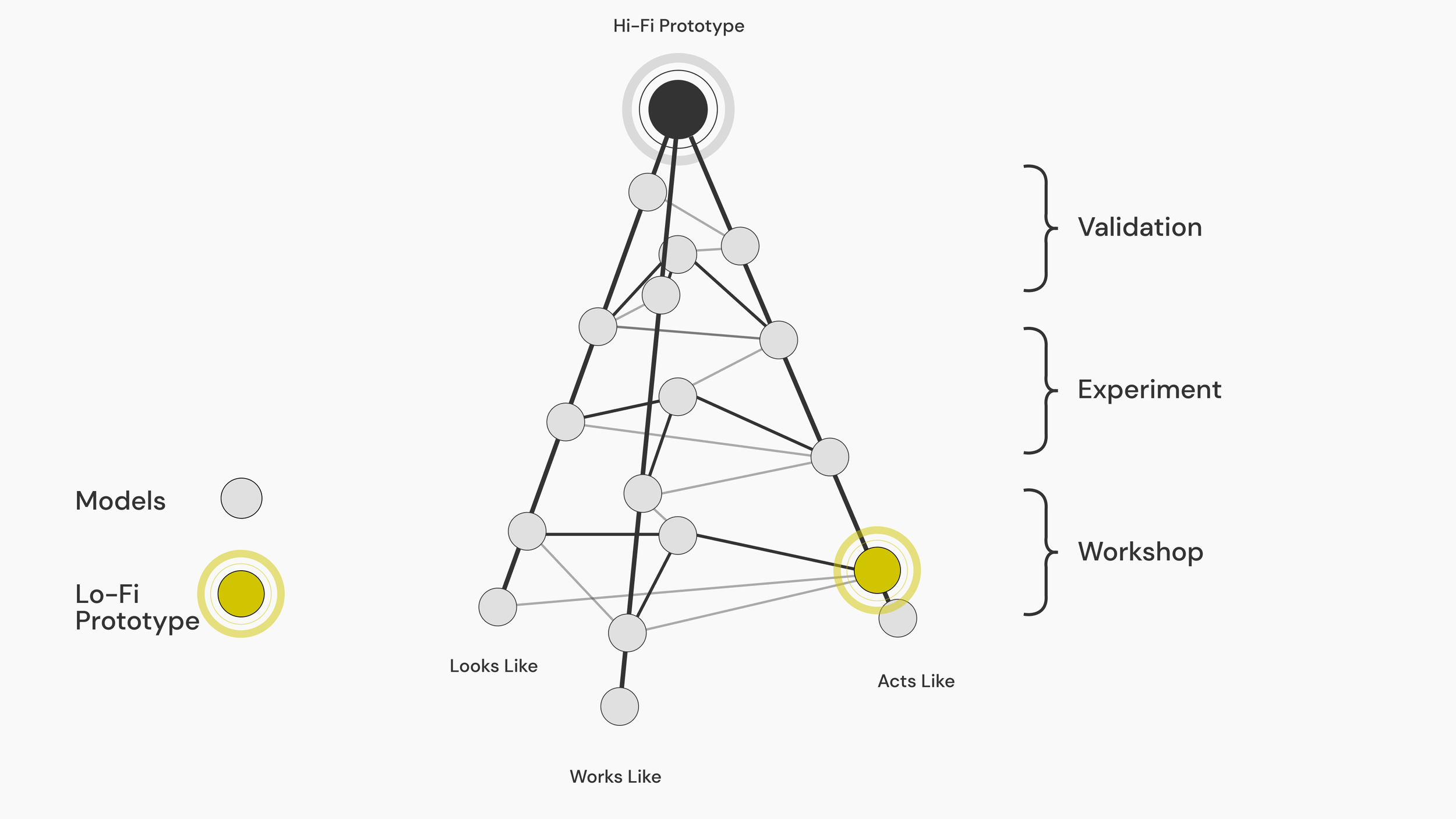
A diagram of the integrated modelling process, showing at which stage of the design process this prototype lies.
PROTOTYPING
Lo-Fidelity Workshops
Carrying forward the insights from research, I built a low-fidelity ‘Augmented Reality’ environment to quickly test ideas on. In a series of collaborative writing workshops, participants built stories together within the prototype framework. Initially borrowing game mechanics from existing storytelling games, then eventually building out new mechanics to better catalyse Creative Bounce using the MDA (mechanics, dynamics, aesthetics) conceptual model for game design.
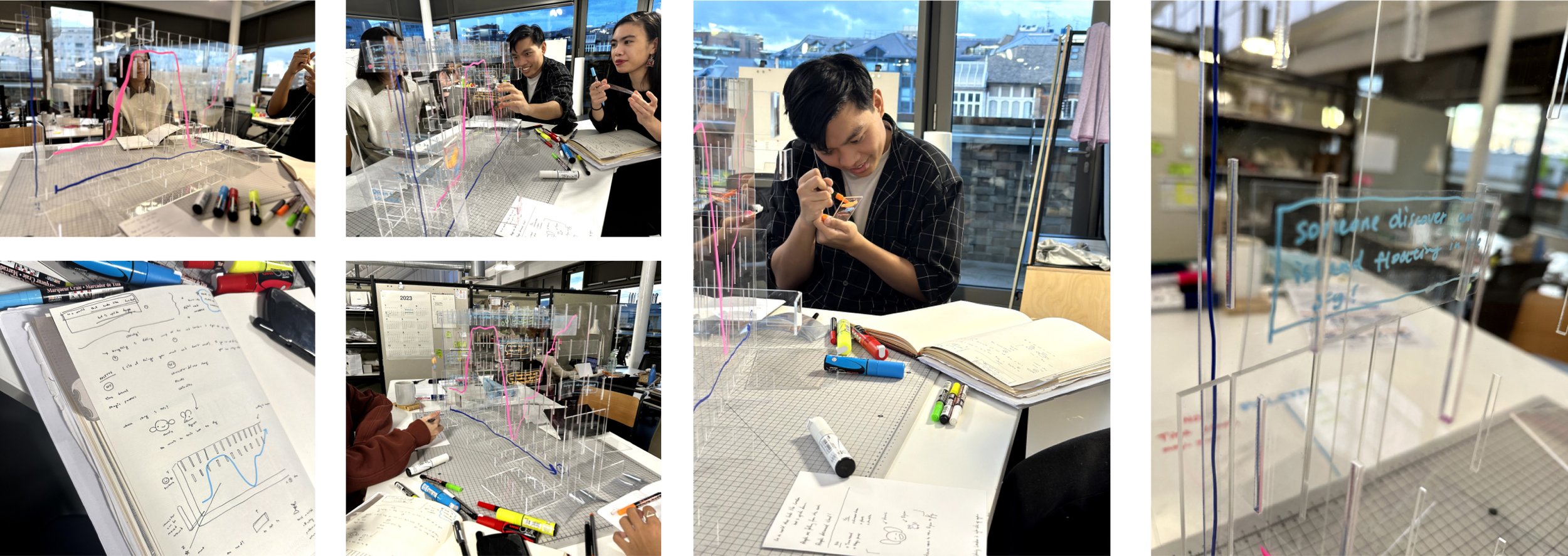
Photos from the writers workshops, using the low fidelity “Augmented Reality” rig.
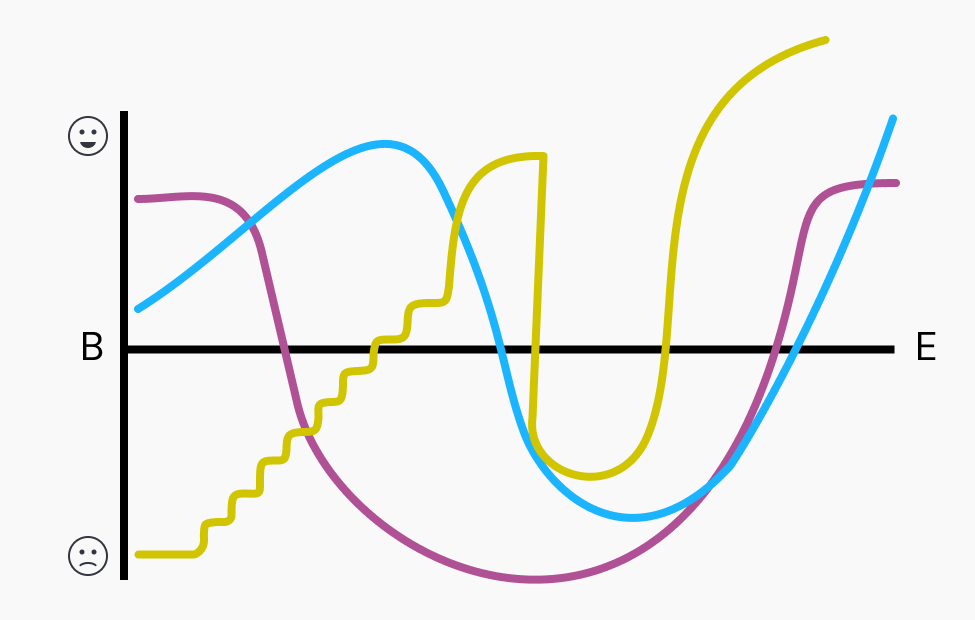
Kurt Vonnegut's Story Shapes categorise narratives into a few basic patterns based on the protagonist's fortune over time, graphically represented on a good-ill fortune axis against the story's progression.
GAME MECHANICS
The Shapes of Stories
For this to function as a story engine, it needed a set of predefined elements, rules, and relationships to drive the stories forward. Kurt Vonnegut’s story shapes endure as a framework for story generation, and proved successful as a foundational mechanic in the lo-fi prototyping workshop.
STORYBOARD
Visualising User Experiences
1
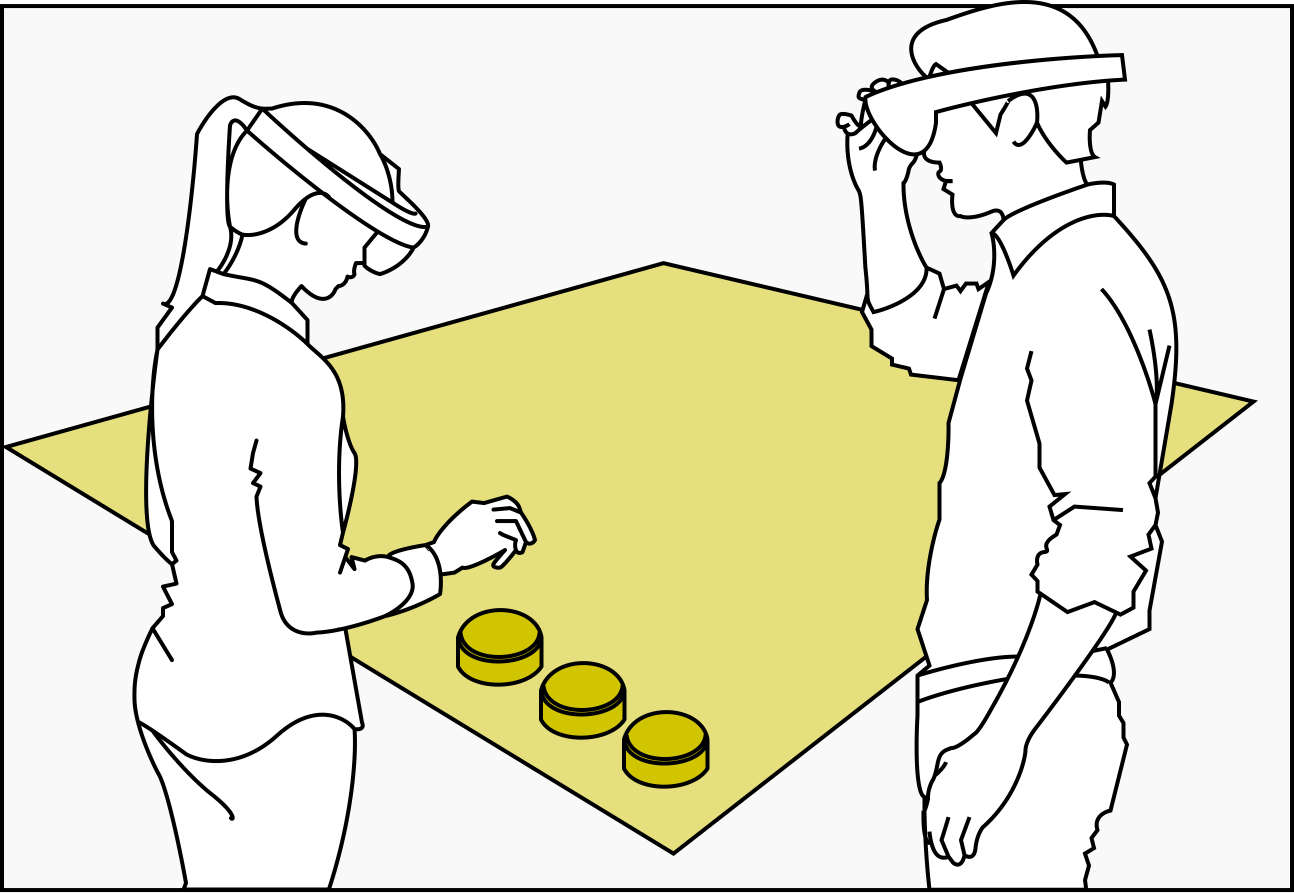
Jane, a science-fiction writer, and Jim, a graphic novelist, want to write a series together. They put on their XR headsets and enter a collaborative virtual space.
2

They select a science-fiction genre space for some thematic ambiance. This is represented as a tablescape, inviting them to immerse themselves in the world of their making.
3
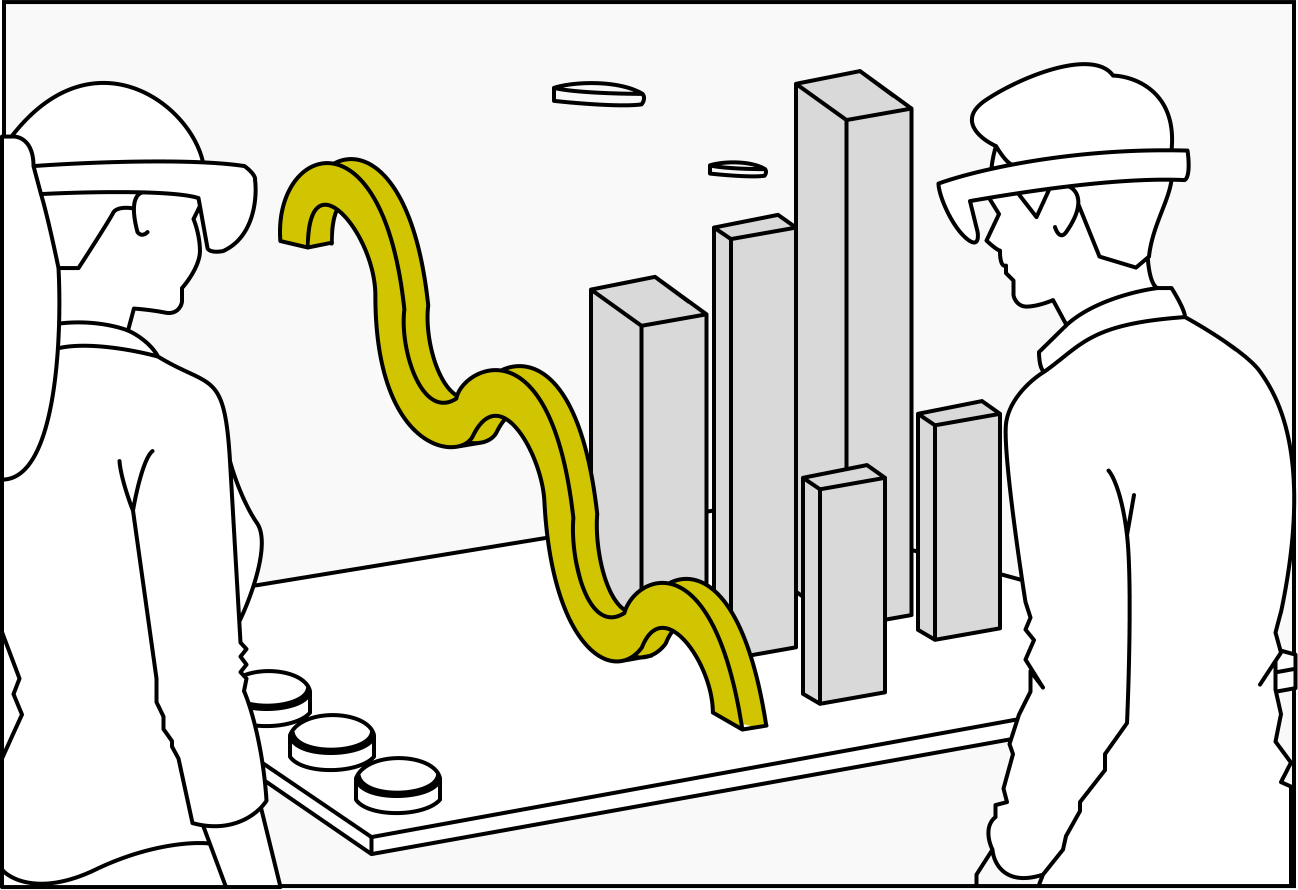
Next, they pick a story shape to structure their narrative upon. Stretching from left to right, it represents the story's flow, with its height indicating the narrative highs and lows.
4

Jane presses a button to record a piece of the story out loud. On releasing the button, her recorded story transforms into a movable text card that she can place wherever she likes along the narrative.
5

Jim and Jane repeat this process, bouncing ideas back and forth to build their story. Their sci-fi story involves multiple converging storylines, which they can structure visually.
6
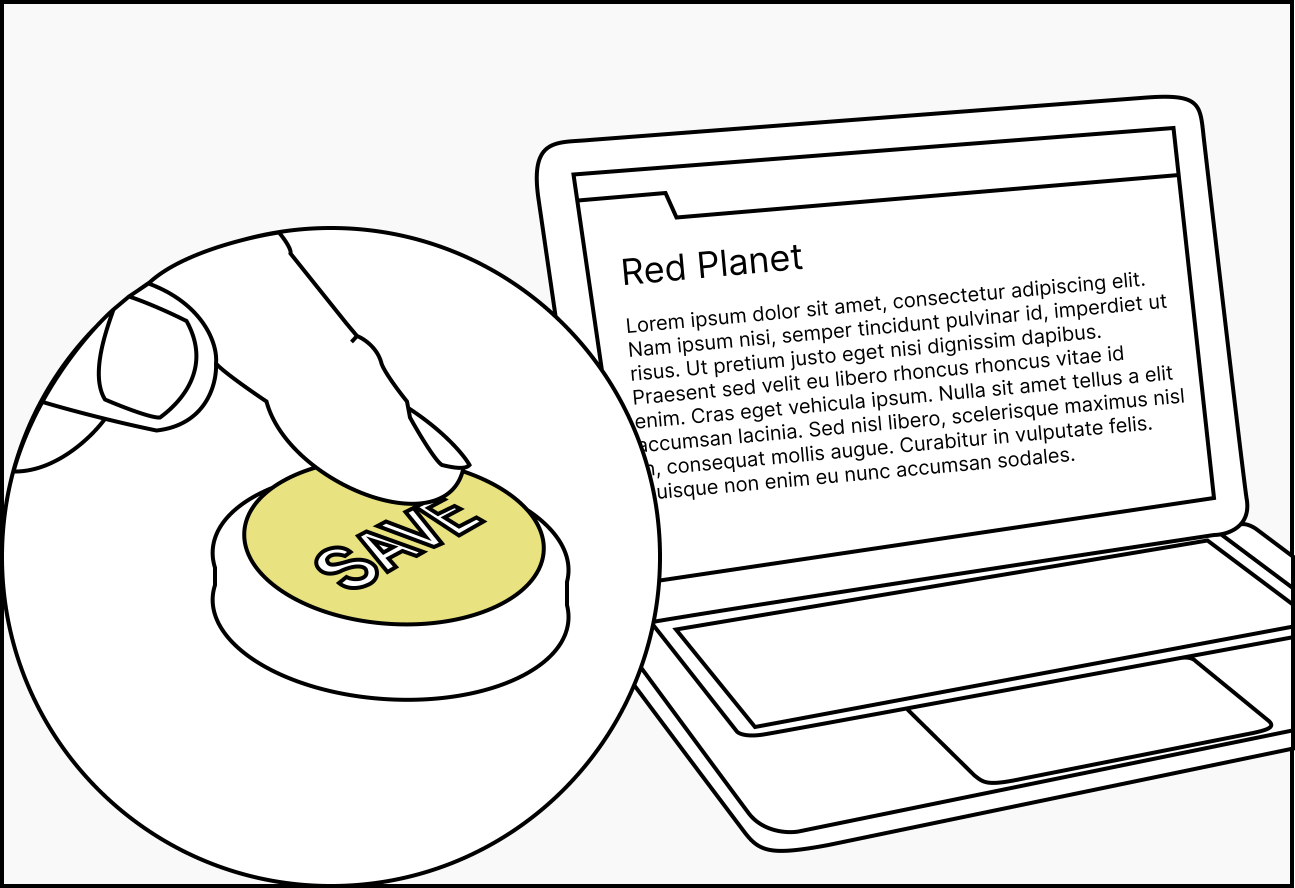
After their session, Jim presses save. Now, they have a PDF treatment for their series. Tomorrow, they can come back to work on it again.
DEVELOPMENT
Mid-Fidelity Experimenting
Moving into the Unity game engine, the next prototype needed to test real XR interactions on the HoloLens 2. I ran a user study with a combination of expert (professional writers) and naive (non-writers) users. They then filled in a validated flow-state questionnaire from the Positive Psychology Lab.
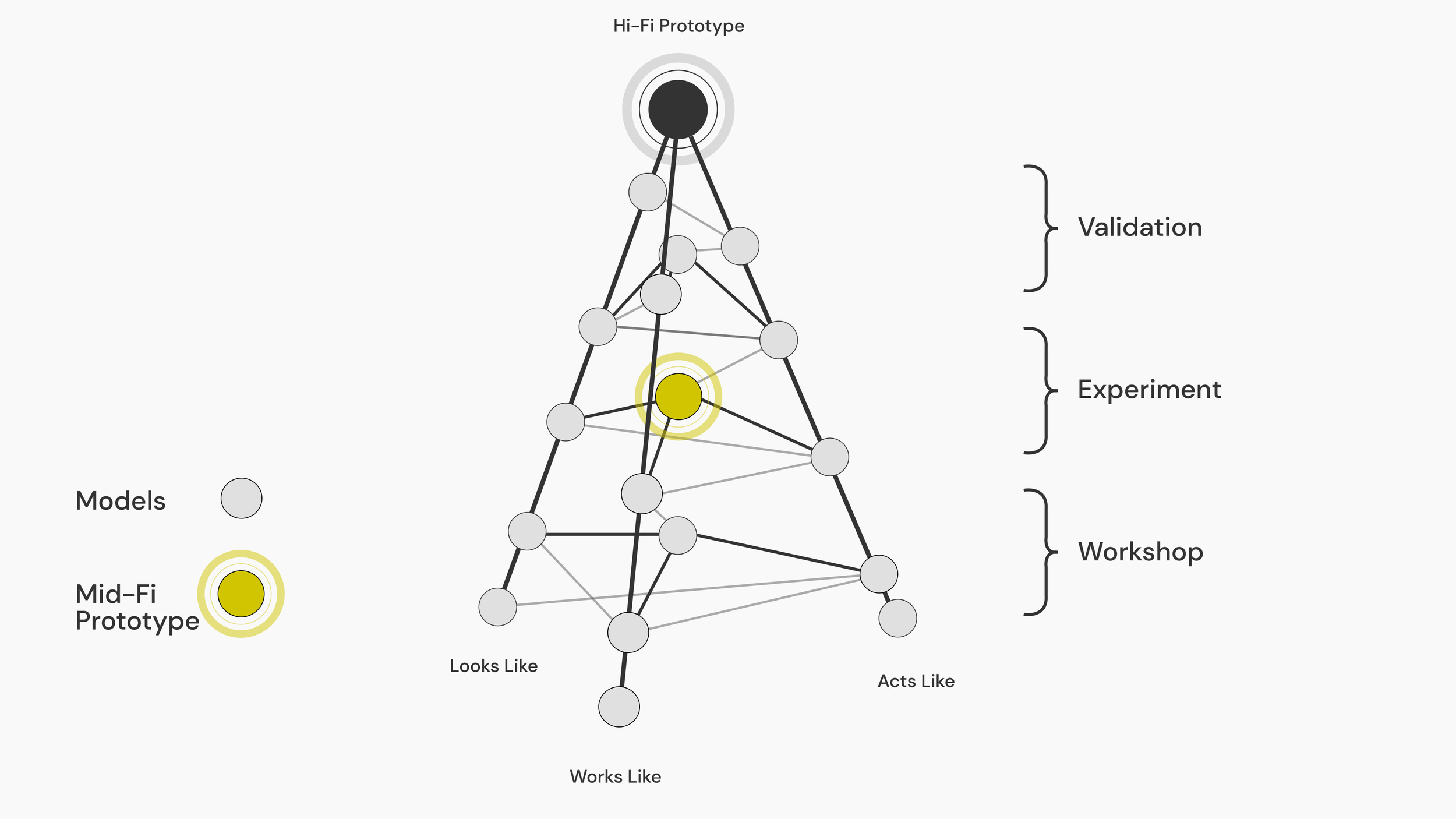
Instantiating speech in a movable text card. This allows writers to manipulate small sections of a story in space.
Networking via Photon. Now multiple users can work together in the same networked room.
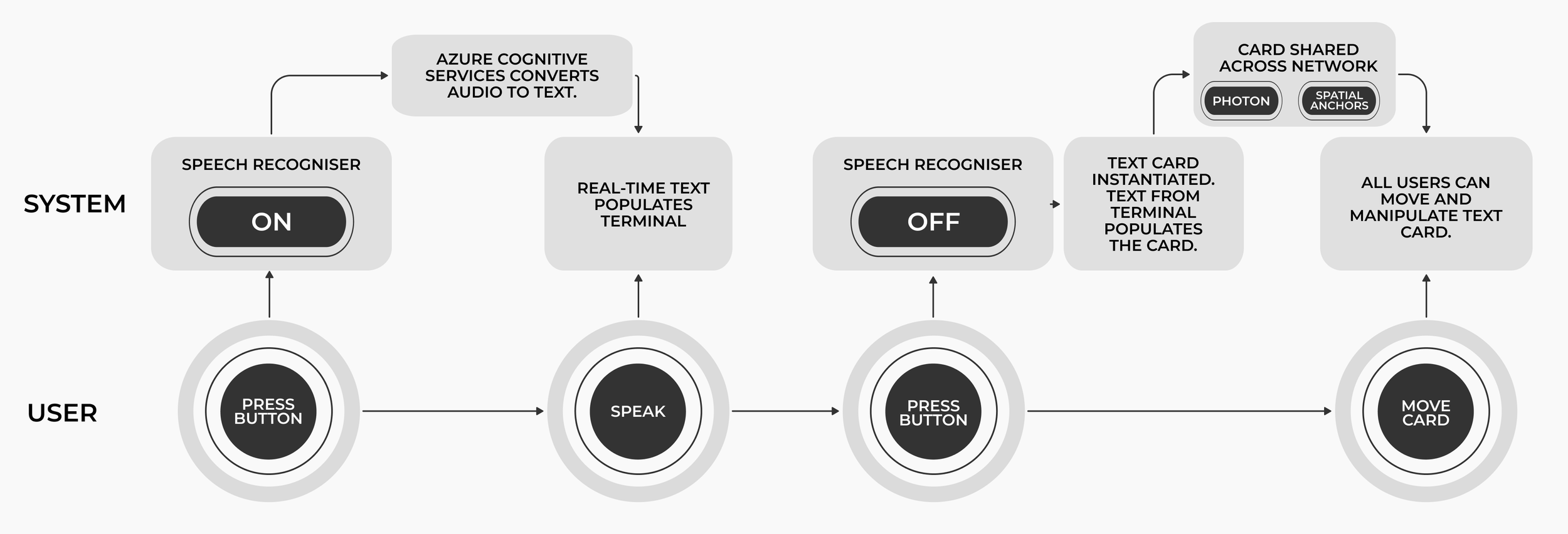
The technical system for the mid-fidelity prototype experiment.
DEVELOPMENT
The Mid-Fi Interactive System
GENRE
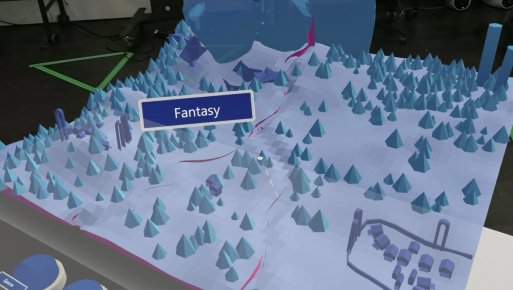
Users choose from four genre options. Fantasy, science fiction, gothic, and mystery. Genres are represented as tablescapes as shown here.
NARRATIVE FRAMEWORK
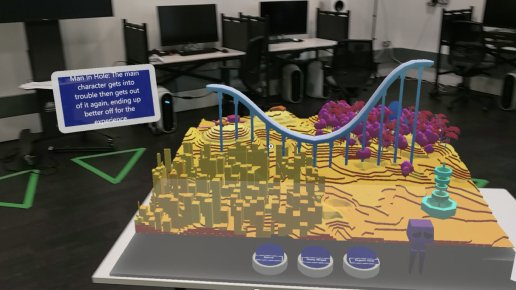
They then choose a narrative framework to build their story upon. This example shows a ‘Story Shape’, with the story flowing from left to right. With the shape height representing the highs and lows the protagonist experiences.
SPEECH-TO-TEXT

Speech-to-text encourages improvisational storytelling. Users press a button on the terminal to capture their speech. Then press ‘create’ to instantiate that speech in a text card.
TEXT CARDS
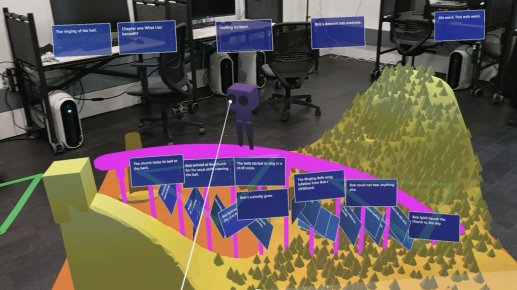
By physically moving these cards, users can rearrange story elements, or take a wholistic view of their story. Create diverging and converging storylines, chapter headings, or multiple timelines.
MULTIPLAYER
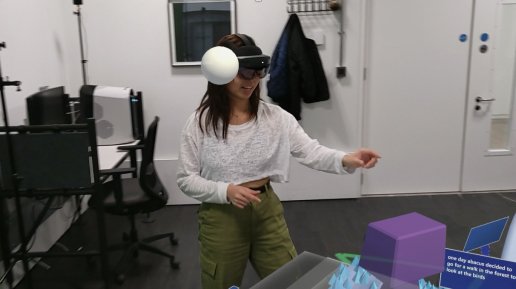
Users then share ideas back-and-forth in real time in a networked room. Augmenting and improving each others’ ideas. This works as well remotely as it does in person.
EXPORT STORIES
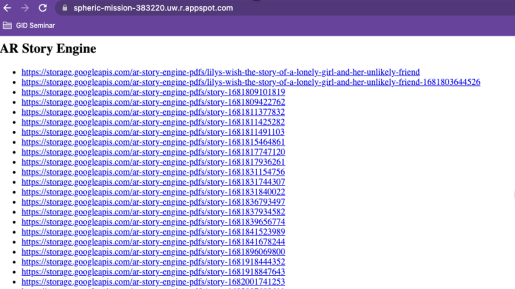
Once satisfied, users share their story to the Narrative Realms website in PDF form. From there they can read and download other stories written in Narrative Realms.
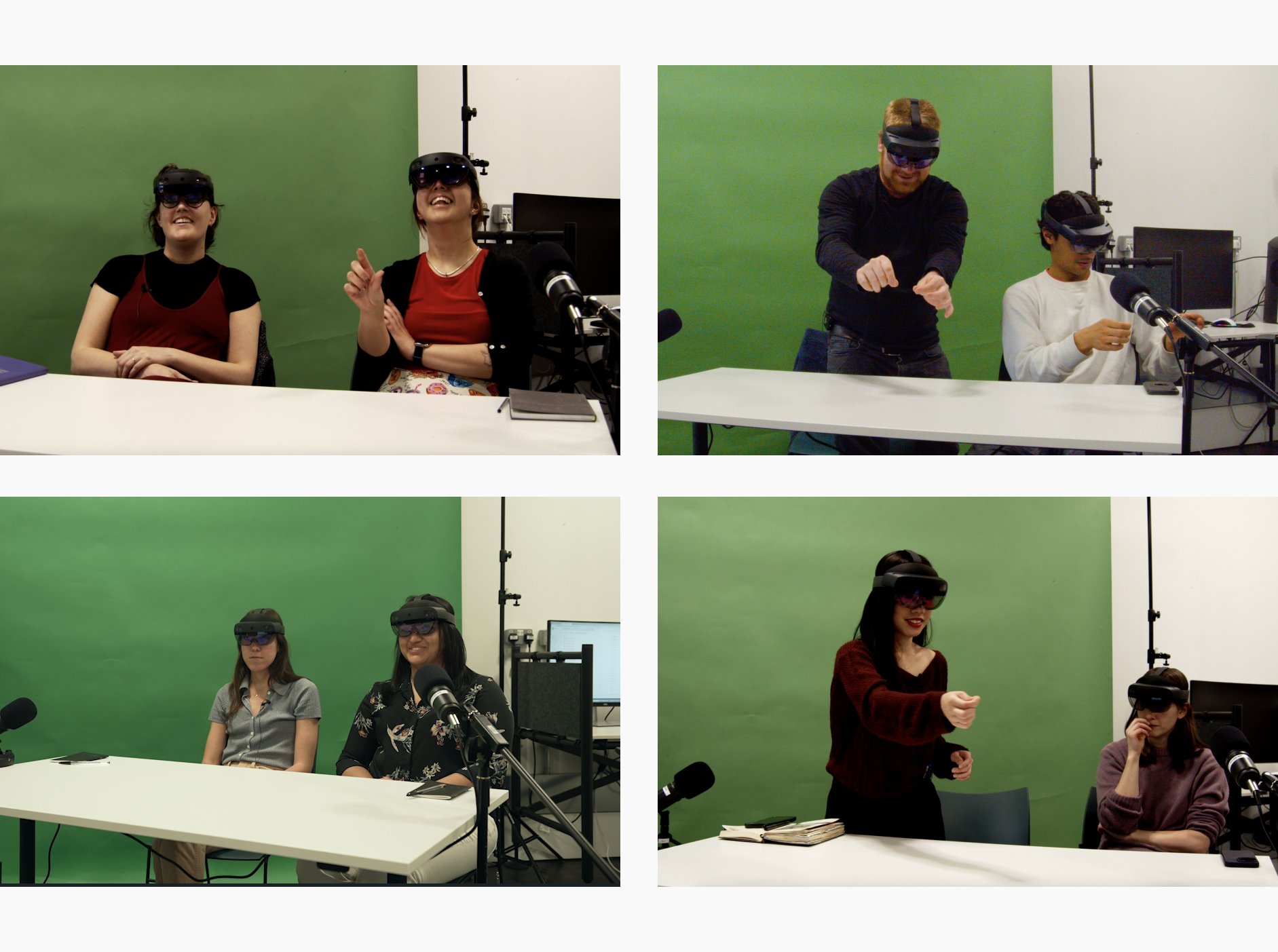
Footage from the user studies. Participants co-authored stories within the Narrative Realms application, and without.
USER STUDY
Measuring Flow
As Creative Bounce is defined above as a combination of interpersonal synchrony and creative flow, this study focuses on flow as a partial measure of Creative Bounce. A user study was carried out to assess users for flow state, with a mix of nine expert and naive users. Six self-declared professional writers, and three non-writers. The study complied with standard ethical procedures.
The results show that participants experienced a mildly positive flow state while using the application, partially supporting the goal of the design, and the results somewhat bolster existing research that an immersive flow state constitutes a core part of the AR experience. These results offer a starting point for future user studies with newer iterations of the application.

The results of the Flow State Questionnaire, developed by the Positive Psychology Lab, designed to measure an individual's experience of flow during an activity.
DEVELOPMENT
Intuitive Interactions
Beyond the results of the flow questionnaire, the study provided a wealth of insights into user pain points. Each experiment was recorded to observe moments of success and failure, and were followed by in-depth feedback discussions.
This resulted in a new iteration of the design with a more intuitive interaction for the speech-to-text terminal. The terminal button was replaced with a tangible microphone, providing all the affordances of a real microphone to the user. Immediately, users began to create more fluid, improvised, collaborative stories.
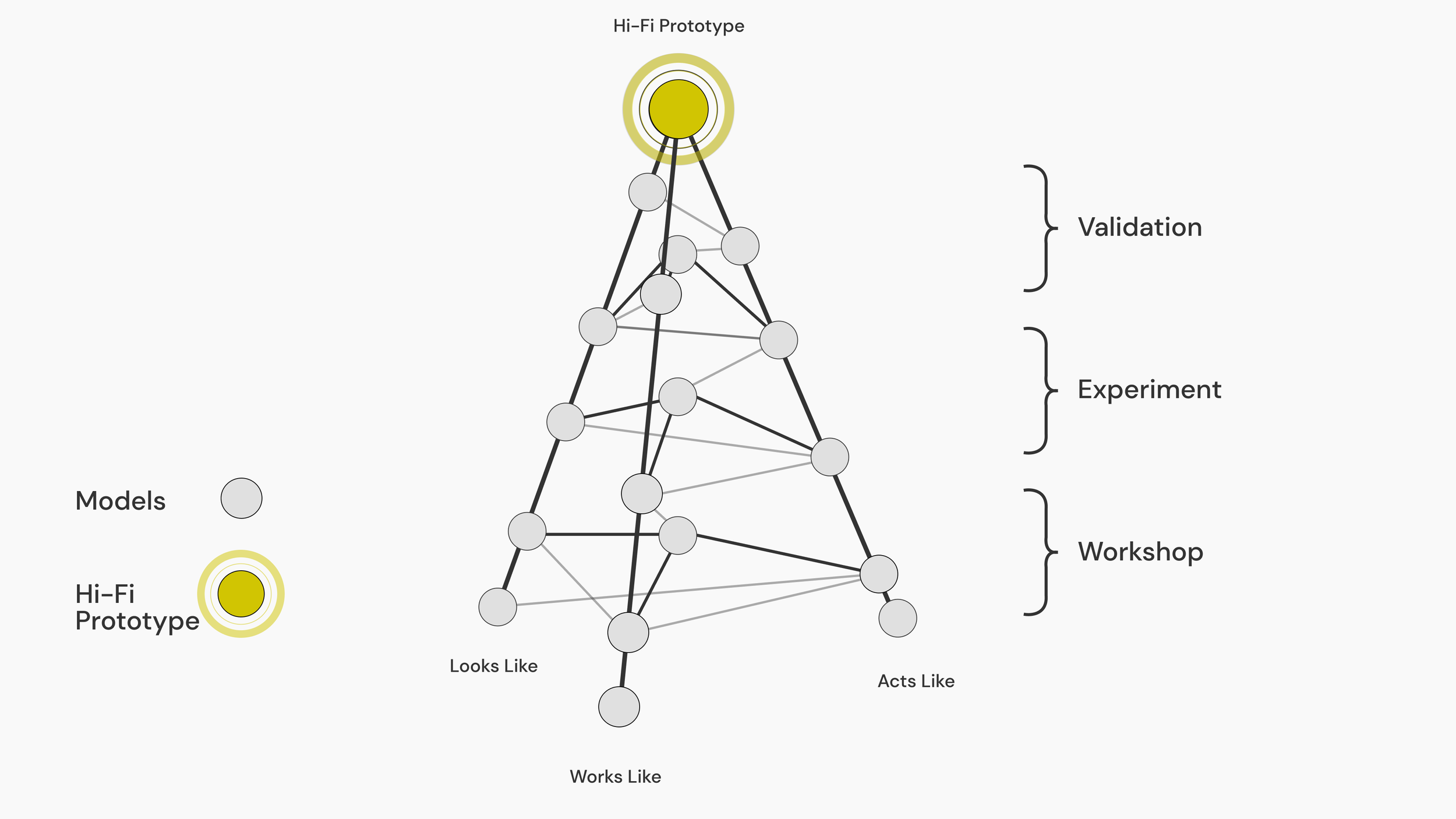
The affordances of a microphone model allow users to quickly determine how to use it.
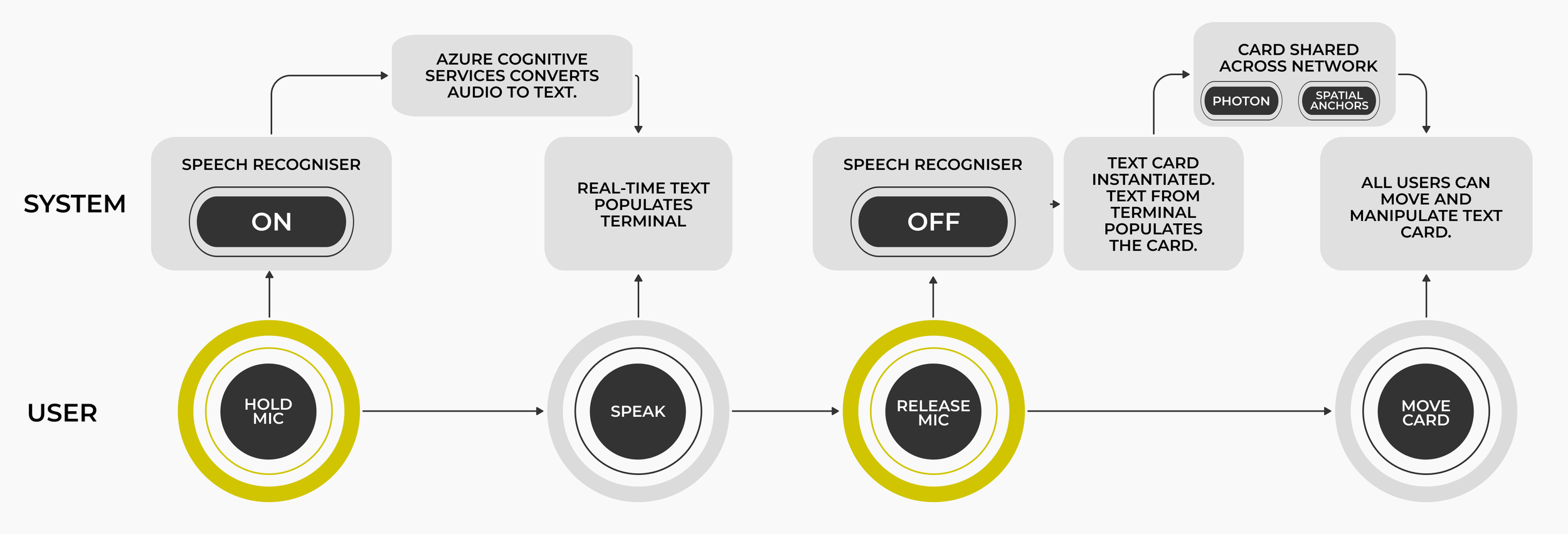
The technical system for the high-fidelity prototype.
VALIDATION
Demoing Narrative Realms
A mystery caper about a curious incident involving a dog, written during demos at the Imperial Summer Show.
A risky space adventure that questions our very reality, written during demos at the Royal College of Art.
A haunting gothic tale about being buried alive, written during demos at the Royal College of Art Graduate Show at the Truman Brewery.
A fantasy dark comedy about about forbidden love and dragons, written during demos at the Royal College of Art.
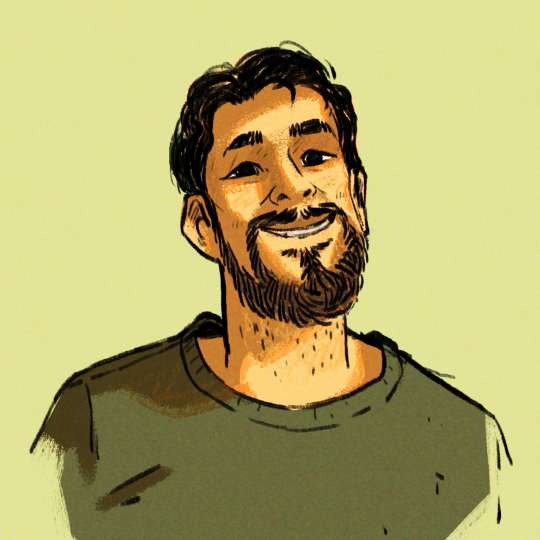
Marc O’Cleirigh

Natalie Ni Chleirigh

Jordyn O’Cleirigh
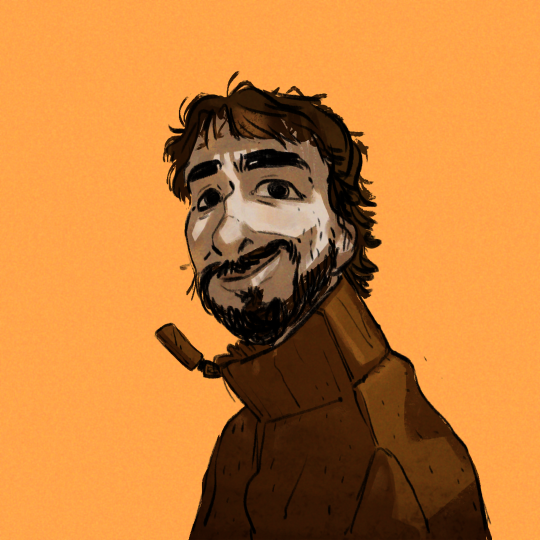
Massi Truzzi
COLLABORATORS
Multidisciplinary Expertise
I am deeply thankful for the code contributions, development advice, and debugging support from Marc O'Cleirigh and Jordyn O’Cleirigh, as well as the modelling expertise of Natalie Ni Chleirigh and Massi Truzzi.

Illustrations by Massi Truzzi